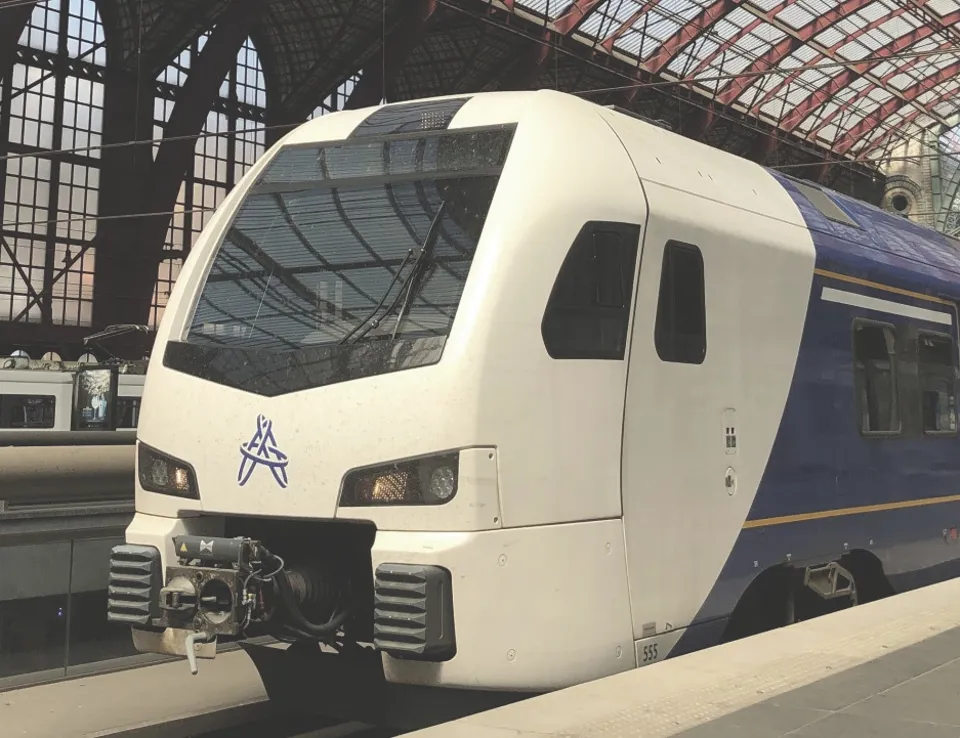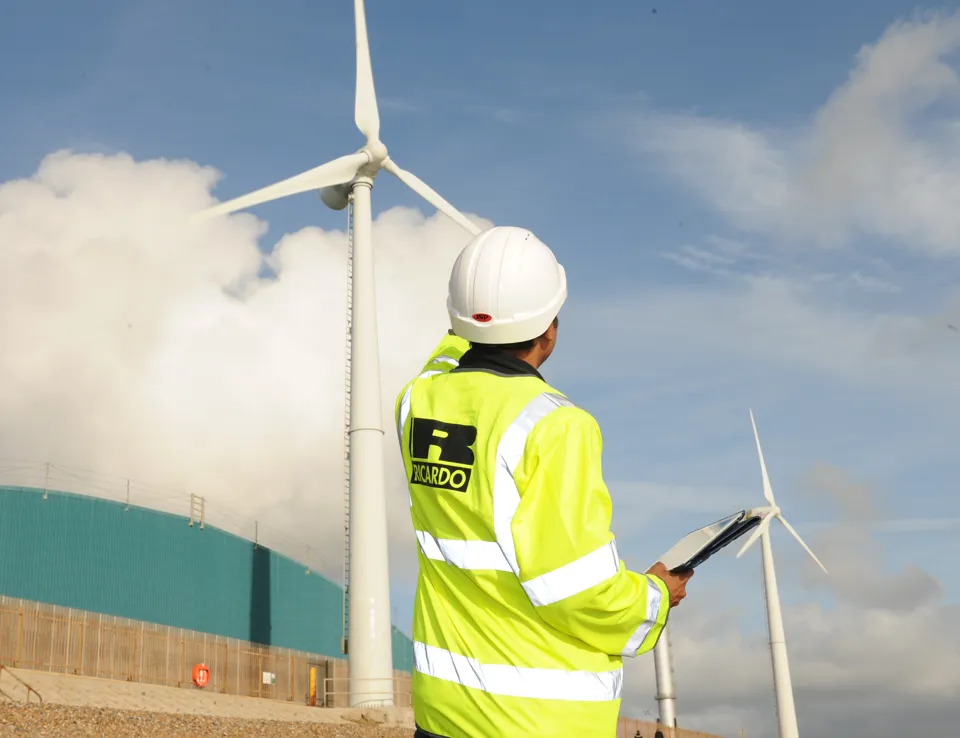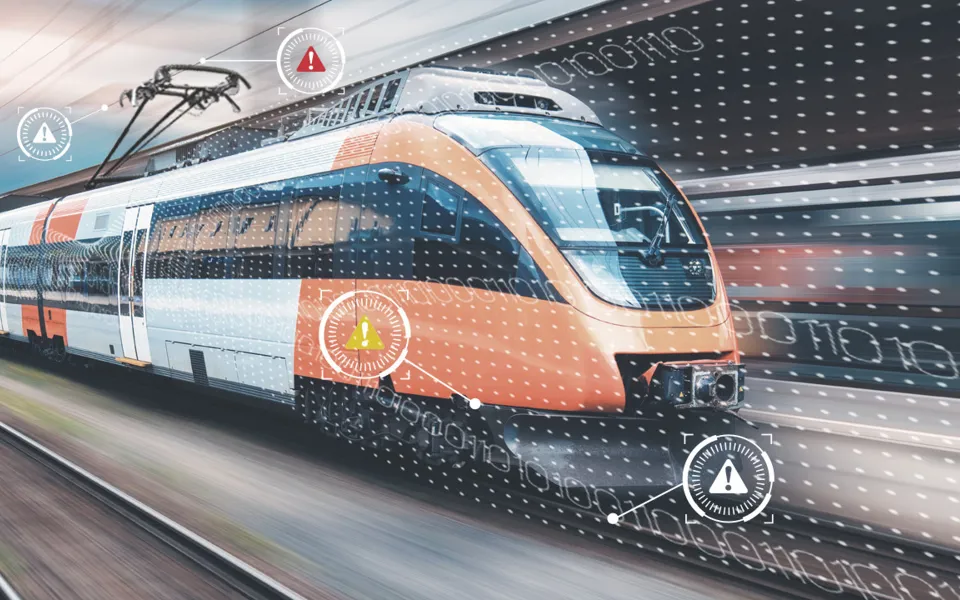
Opportunities and challenges in sharing digital twins
27 Sep 2022
Vehicle manufacturers, operators and infrastructure managers all share a piece of the puzzle when it comes to building digital twins for rail infrastructure or vehicle systems.
However, during the recent Railtech event in Utrecht, the Netherlands, I hosted a workshop alongside my Ricardo colleagues, Jasper Peen and Gijs Vugts, to explore a series of emerging questions on the role of digital twins in the rail sector, and whether the benefits are truly being maximised.
Some of the questions we used as discussion prompts included:
• Where are the examples of digital twins are already used in practice?
• What benefits do digital twins bring?
• What are the benefits of sharing data versus sharing parameters and complete models?
• What are the challenges to overcome in sharing data, parameters and models?
Definitions
To start with, we needed to ensure we were using an agreed definition of a digital twin, as this current 'buzz' word has multiple meanings.
For the purpose of this blog, we refer to a digital twin as a virtual (simulated) copy of the real product, which is not the same as “just” a set of operational performance data.
This virtual copy, or model, can be created based on theoretical behaviour of the systems or operational data (for instance by system identification).
Before a digital twin can be used, it is essential that proper model validation has taken place.
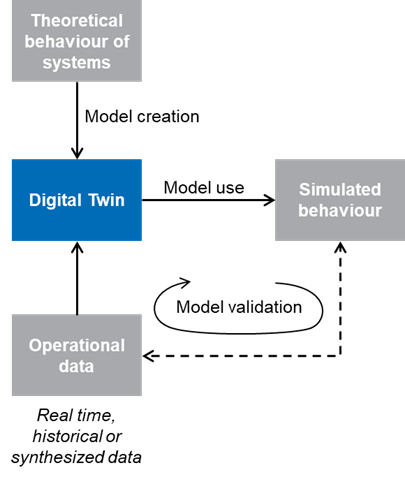
A digital twin can be built at a component level or based on the complete rail system to variable levels of detail.
Furthermore, it is not necessarily fully digital, it can contain parts of the real world (creating a Hardware-in-the-Loop or HIL model). This can be especially useful for system integration testing.
In terms of rolling stock and infrastructure, however, it was agreed by all attendees that digital twins can benefit all phases of the life cycle, as shown in the picture below.
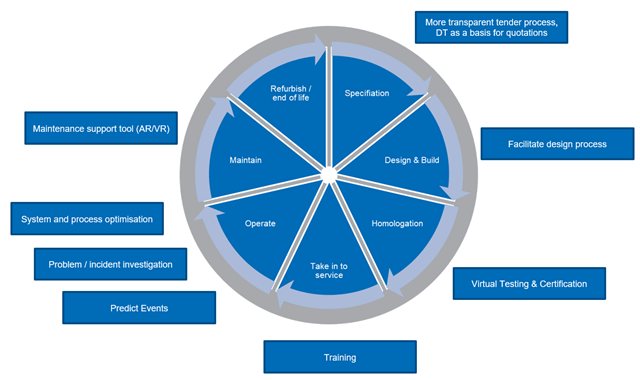
Sharing our models
The reason to use digital twins is to do with controlling risks, reducing costs and improving our predictions. But we believe they can also be used to encourage greater collaboration.
Building Information Modelling (BIM) is a great example of how to enhance the design process when there are so many different parties involved. For example, it is recognised that the model created during the design and build phase can also be extremely valuable in the operation and maintenance phase, opening a range of possibilities for technologies like augmented and virtual reality.
In the rail sector, however, models are often created separately by operators, infrastructure managers and manufacturers, who rarely share models.
This is most likely because sharing models is considered to be risky, involving intellectual property on the one hand, and a lack of awareness on the other, not only of the existence of these models but the potential benefits they can offer other parties.
Yet our day-to-day experience of working with clients in the rail sector shows that collaboration and sharing will benefit all parties.
One clear example we discussed focused on the use of multi-body dynamic models. These models are used as a digital twin to simulate the dynamic interaction between rolling stock and infrastructure. Such a model can be very useful in the specification and design phase of a vehicle or vehicle component.
After the design phase, it can be used for virtual certification, since in new standards, such as EN14363, specific situations allow the use of such models instead of expensive and complex physical test runs on track.
In the operational phase of rolling stock, an operator can use the model to investigate passenger comfort or look for improvements in the wheel/rail interaction to reduce costs. Meanwhile, an infrastructure manager can benefit from using such a model to assess track quality based on vehicle reactions. An example of such an application is Ricardo’s innovative track geometry assessment tool, Pupil.
In our opinion, multiple stakeholders can make use of the same digital twin for distinct purposes in each of their specific roles. Greater co-operation is needed to ensure these benefits extend to all parties.
Sharing the benefits of a digital twin
Issues about intellectual property and confidentiality are difficult to resolve. The same goes for financing - who is going to provide the investment?
But an interesting idea discussed during the workshop was to create overarching bodies in the rail sector who will invest in digital twins that are made available to all stakeholders.
Furthermore, with regard to the intellectual property challenge, there are multiple ways to share models. Apart from sharing the complete model, with all information visible, it is also possible to share a black-box version of the model, or just share the output.
The best method will depend on each situation. But in every case, it is important when sharing a model to make clear what the interfaces are (input and output) and what the model can be used for.
In our conclusions, we agreed digital twins will become more state-of-the-art and ever more relevant in the industry, so it is important that we search for better ways to collaborate in their development.




 Follow Ricardo plc for regular updates
Follow Ricardo plc for regular updates



